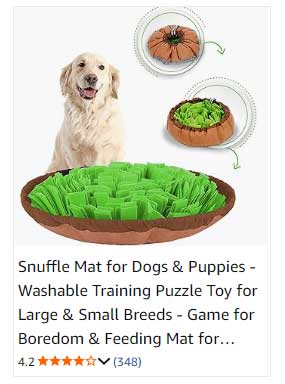The intestines play a critical role in the overall health and well-being of canines.
Just like humans, dogs possess a complex digestive system that efficiently processes food, absorbs nutrients, and eliminates waste.
Understanding the anatomy and function of a dog’s intestines can help pet owners ensure their furry friends maintain a healthy digestive tract.
Anatomy of a Canine’s Intestines
The canine intestines are divided into two main parts: the small intestine and the large intestine.
1. Small Intestine:
This is where most of the digestion and absorption of nutrients occurs.
The small intestine consists of three sections:
Duodenum:
The first part of the small intestine, where acidic stomach contents enter and are neutralized by bile from the liver.
Digestive enzymes are also secreted here, breaking down food components.
Jejunum:
The middle section, further digesting food and absorbing nutrients such as carbohydrates, proteins, and fats.
Ileum:
The last part of the small intestine, which absorbs vitamin B12 and bile acids, ensuring the body has everything it needs to function properly.
2. Large Intestine:
Also known as the colon, its primary function is to absorb water and electrolytes from the remaining indigestible food matter.
It also stores and compacts waste before it is excreted.
The large intestine in canines is shorter than in humans, giving it a different role in the digestive process.
Digestion Process in Canines
The digestion process begins in the mouth, where food is mechanically broken down by chewing and mixed with saliva.
From there, food travels down the esophagus to the stomach, where it’s mixed with gastric juices.
Afterward, the partially digested food moves into the small intestine.
In the small intestine, the presence of food stimulates the pancreas and liver to release digestive enzymes and bile.
These substances are crucial for breaking down fats, carbohydrates, and proteins into smaller, absorbable units.
The intestinal walls are lined with villi, small finger-like projections that increase surface area and facilitate nutrient absorption into the bloodstream.
Once the nutrients are absorbed, the remaining material moves into the large intestine, where water is reabsorbed, and the waste material is eventually formed into feces.
Common Digestive Issues in Dogs
Understanding the structure and function of canine intestines is important for identifying potential health issues that can arise.
Some common digestive problems include:
Diarrhea:
Often caused by dietary indiscretion, infections, or intestinal parasites, diarrhea can lead to dehydration if not treated promptly.
Constipation:
This can occur if a dog is not getting enough fiber in its diet or has underlying health conditions.
Inflammatory Bowel Disease (IBD):
A chronic condition that leads to inflammation of the intestines, causing various gastrointestinal symptoms.
Intestinal Blockages:
These can occur when dogs ingest foreign objects, leading to severe discomfort and requiring immediate veterinary attention.
Promoting Digestive Health
To keep a canine’s intestines healthy, consider the following tips:
Balanced Diet:
Feed your dog high-quality, balanced food that meets their nutritional needs.
A diet rich in fiber can benefit the digestive system.
Regular Exercise:
Physical activity promotes healthy digestion and helps maintain a healthy weight.
Hydration:
Ensure your dog has constant access to fresh water, which aids in digestion and nutrient absorption.
Routine Vet Check-ups:
Regular health check-ups can help identify and prevent digestive issues before they become serious problems.
In conclusion, the intestines are vital organs in a canine’s body, crucial for effective digestion and overall health.
By understanding their anatomy and function, pet owners can take proactive steps to ensure their dogs maintain a healthy and happy digestive system.












